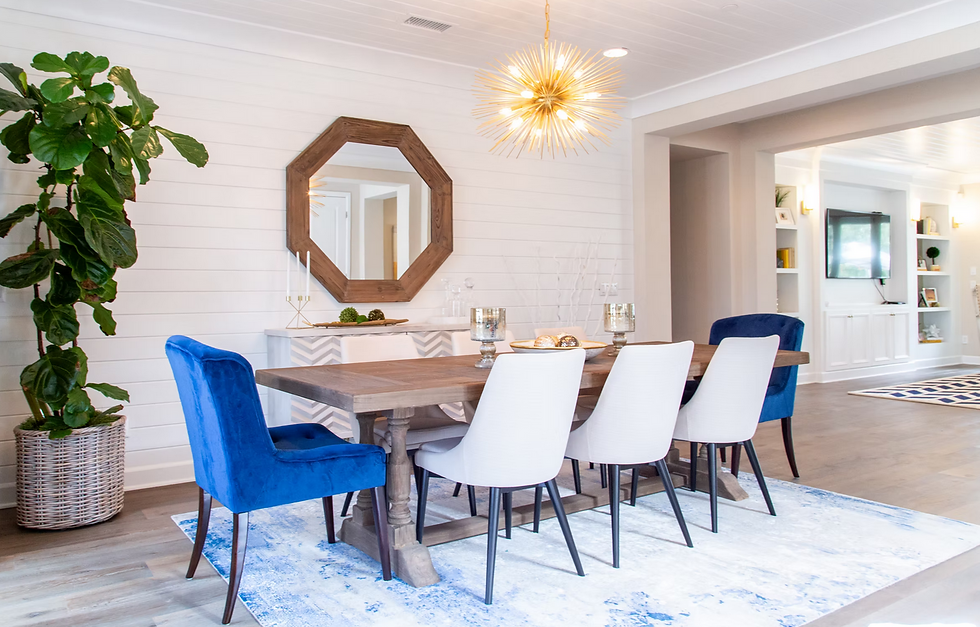Amazing Tips On Developing Color Throughout Your Home
- Vision Interiors
- Apr 18, 2022
- 2 min read

Each person has a different preference for color. Some prefer bright colors, while others prefer neutrals. There is no "ideal" color palette.
We have all lived in homes with too many colors.
This caused a disorientation between rooms. Sometimes, we had to leave the room.
This fate can be avoided by hiring an interior designer to assist you in your renovations or to simply advise you on the best color choices for your space.
These are some helpful tips and tricks that our interior designers have provided to make your life easier.
Choose Flow-Through Painting
A consistent color can create a cohesive atmosphere. It is important to choose one primary or secondary color for open-plan homes.
It doesn't have to be white, gray or beige. It should be the same color as the foyer, hallways and main connector room. Your dominant color should dominate your space.
Pay attention to your sight lines
Customers may sometimes want more options for wall colors. If this is the case, you might want to consider sight lines.
Consider it this way: How many rooms can you see from your living room? It is crucial that colors complement each other if you have views to the foyer or dining room. If you use a different color scheme for each room, it can make the space look strange.
Pick Color Groups
Limiting your colors to the same temperature is one way to ensure that color choices flow seamlessly from one room into another.
Some people like warm colors such as yellows, oranges, and reds. Others may prefer modern colors such as blues, greens, and grays.
You can pick multiple colors and then use all of them. As you move from one room to the next, you might choose a gray-blue and a pristine color. This same principle is applicable to decorative accessories.
Ask your local paint shop for a "tint" of wall paint. This could be done by first reducing the main color 50%, then adding white. It can be made darker or lighter. You can create harmony by using different colors. Paint decks are a great way of finding colors that complement each other.




Comments